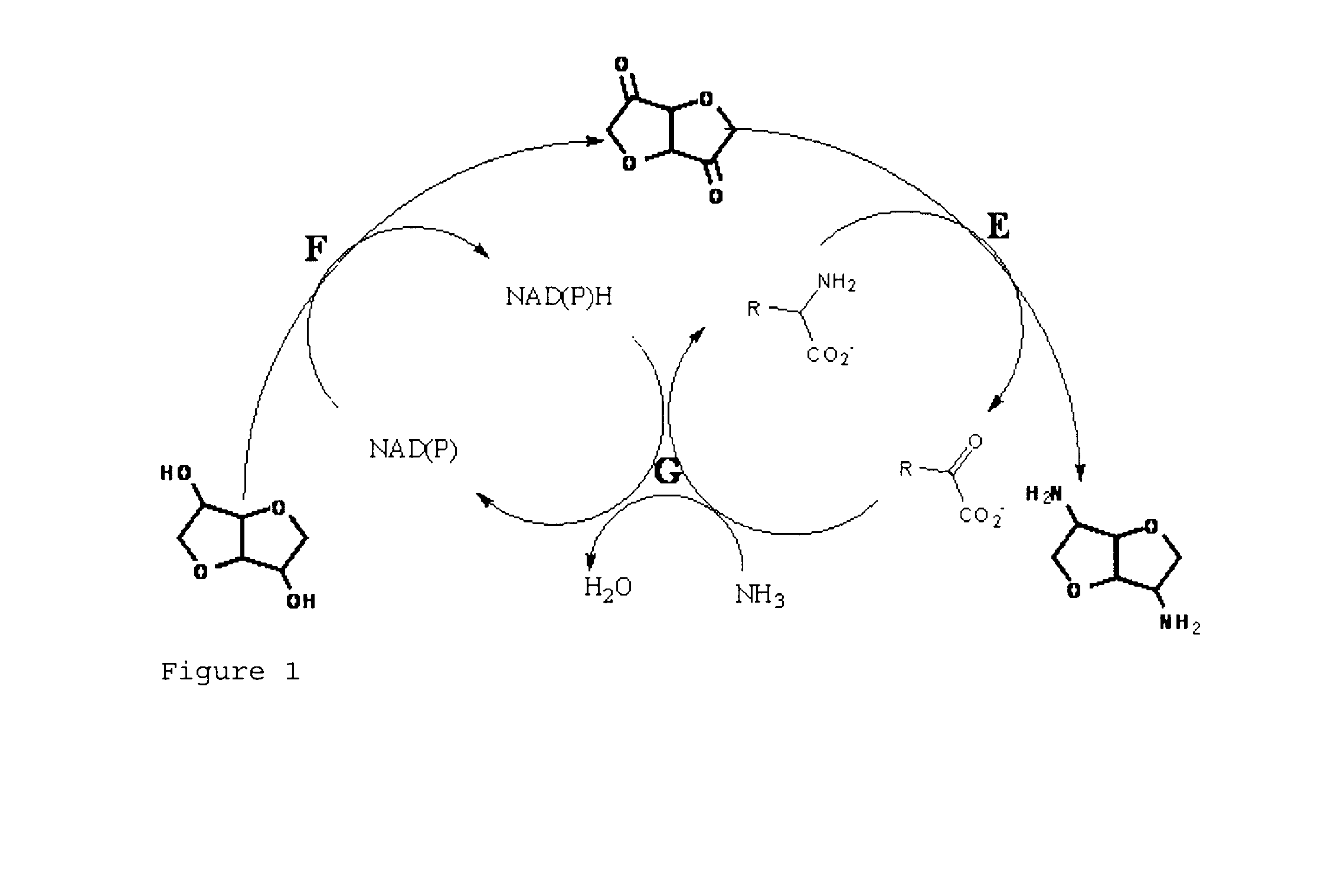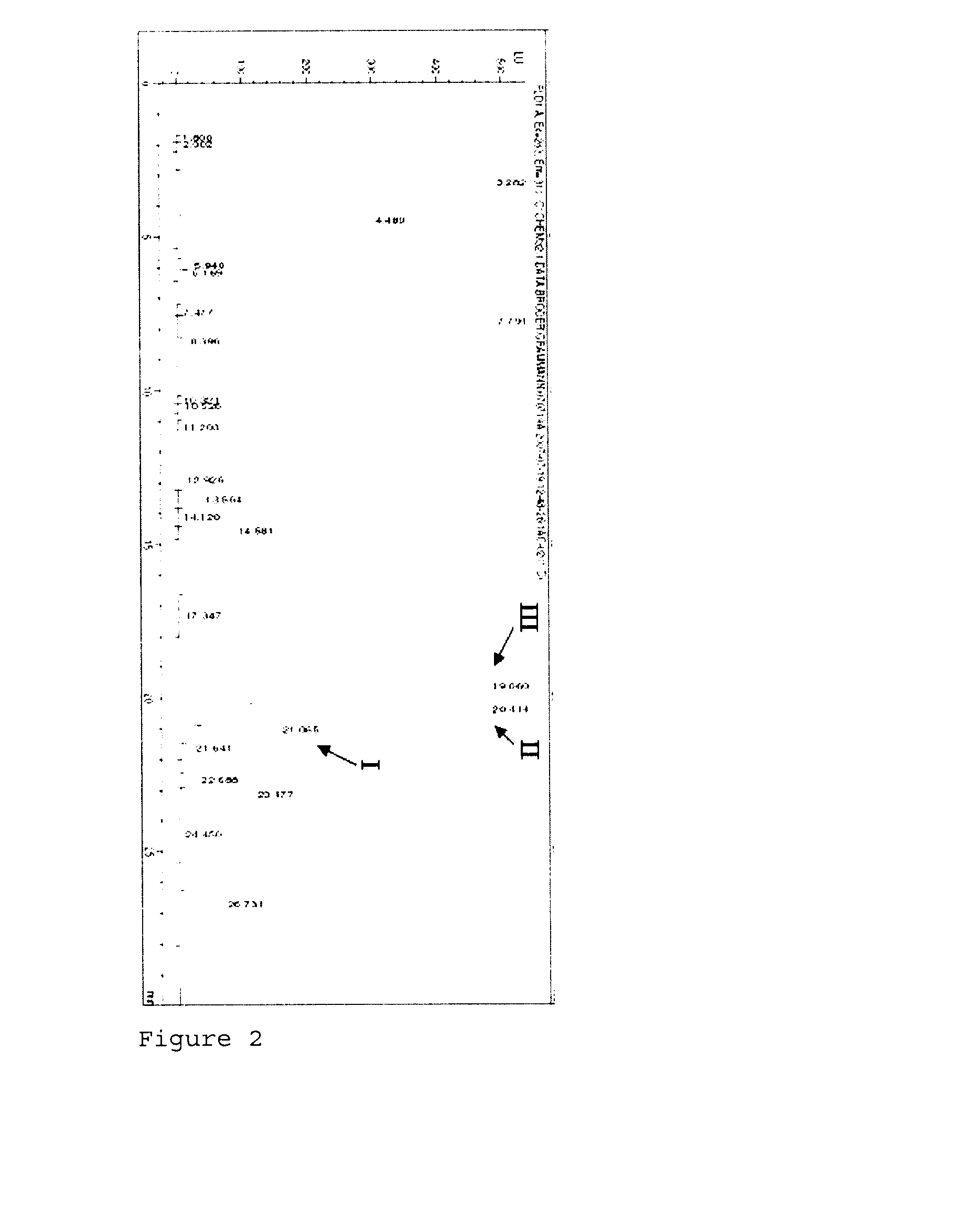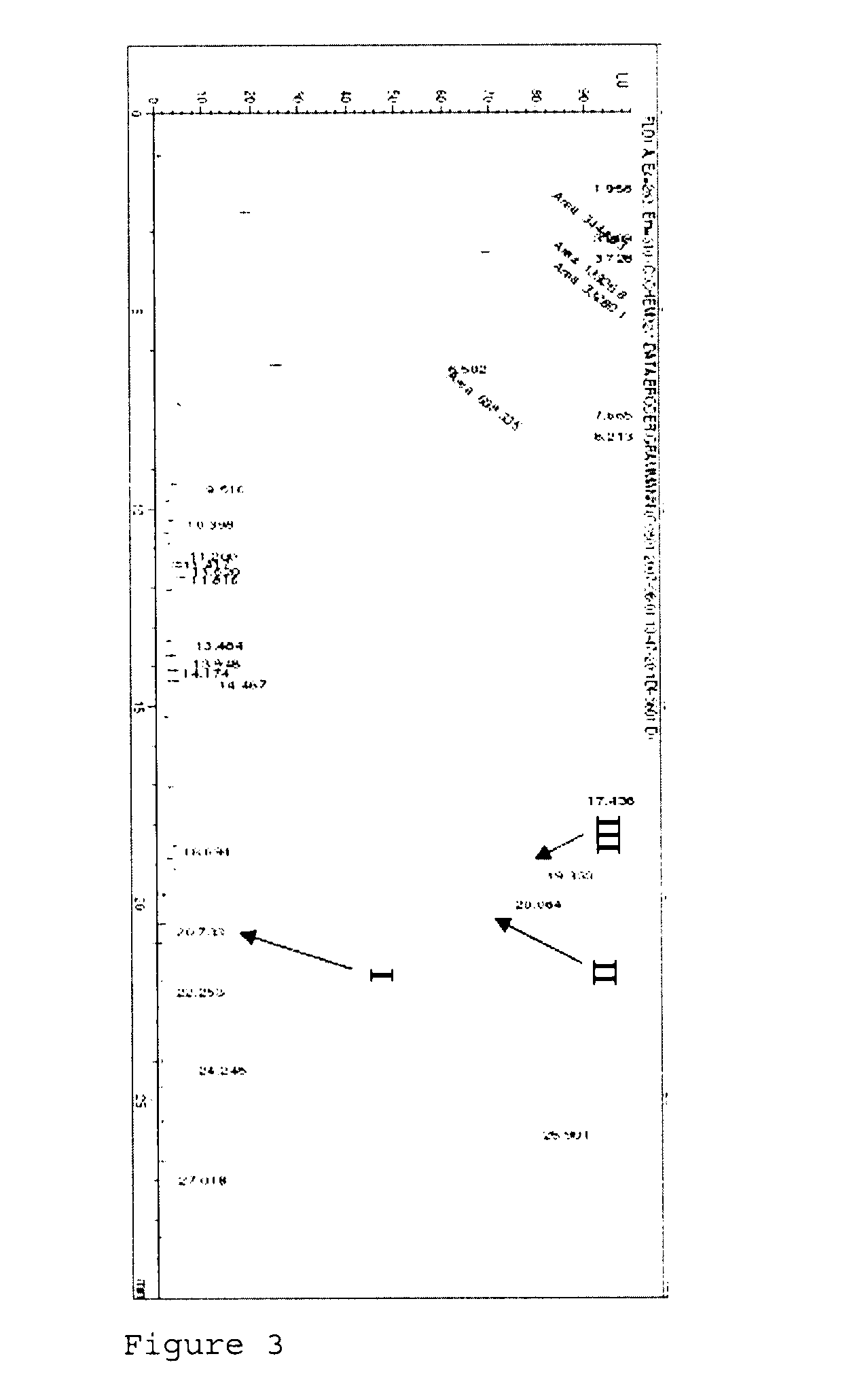Method for producing multicyclical ring systems carrying amino groups
a multi-cyclical ring system and amino group technology, applied in the field of multi-cyclical ring system production, can solve the problems of low diamine yield to be obtained, high inefficiency, and reaction pathways described
- Summary
- Abstract
- Description
- Claims
- Application Information
AI Technical Summary
Benefits of technology
Problems solved by technology
Method used
Image
Examples
example 1
Synthesis of Diaminoisosorbide (II) and Diaminoisoidide (III) Starting from Diulose (VII) Using the Bacillus circulans Aminotransferase BtrR
[0112]The BtrR aminotransferase gene has been synthesized at Geneart, taking into consideration the codon usage of Escherichia coli, cf. SEQ ID NO: 5. In addition, the synthesized sequence received an EcoRI cleavage site at the 5′ end and a PstI cleavage site at the 3′ end (see appended sequence). The gene was provided integrated into the vector pGA4 (ampR). For cloning btrR into the vector pACYC-Duet-1, btrR was excised from pGA4 using the restriction enzymes EcoRI and PstI.
[0113]The ligation mixture of btrR and pACYC-Duet-1 was first cloned into E. coli DH5α and, after the sequencing of the gene had been checked, into the target organism E. coli BL21 (DE3). The recombinant plasmid is named pACYC-Duet1::btrR.
[0114]By cloning btrR into the MCS1 of pACYC-Duet1, a (His)6-tag fusion is introduced at the N terminus of the protein.
[0115]To purify the...
example 2
Amination of the Monoketone (VIII) with the B. circulans Aminotransferase BtrR
[0123]The enzyme assay is composed as described in example 1. Monoketone (VIII) at a final concentration of 50 mM is employed instead of diulose.
Composition of the Enzyme Assay
[0124]
Final concentration in theBuffer and solutionsmixture0.1M Tris-HCl buffer pH 950mMMonoketone (VIII)50mML-Glutamine10mMPyridoxal phosphate0.3mMPurified BtrR in 50 mM Tris-HCl400μgTotal volume500μl
[0125]FIG. 5 shows the HPLC diagram of the separation of the reaction mixture of aminotransferase BtrR and monoketone (VIII) as substrate at pH 9. The amination of the monoketone (VIII) affords more (X) than (IX), analogously to example 1.
example 3
Starting from Isosorbide, Conversion into the Diamine in a Coupled Reaction
[0126]To successfully convert isosorbide into the diamine, a reaction with cell extract from Pichia guillermondii and purified BtrR-His protein is set up. Besides the direct synthesis of isosorbide via diulose to give the diamine, the synthesis also proceeds via the intermediates monoketone-monoalcohol, monoamine-monoalcohol, monoamine-monoketone to give the diamine. The cell extract of P. guillermondii is prepared as follows: 0.43 g of moist cell biomass was resuspended in 1 ml 0.1 mol / l Tris / HCl buffer pH 7.2 in a reaction vessel (fill level 1.5 ml). To this cell suspension there were added 1 g of glass beads (diameter 0.25-0.3 mm), whereupon the cells were disrupted in a ball mill (Retsch) for 2×5 min at a frequency of 1 / 30 s. Before the second 5-min run, the reaction vessel was briefly placed on ice in order to dissipate frictional heat. The mixture was centrifuged for 10 min at 13200×g and the supernatan...
PUM
| Property | Measurement | Unit |
|---|---|---|
| temperature activity | aaaaa | aaaaa |
| pH | aaaaa | aaaaa |
| pH | aaaaa | aaaaa |
Abstract
Description
Claims
Application Information
 Login to View More
Login to View More - R&D
- Intellectual Property
- Life Sciences
- Materials
- Tech Scout
- Unparalleled Data Quality
- Higher Quality Content
- 60% Fewer Hallucinations
Browse by: Latest US Patents, China's latest patents, Technical Efficacy Thesaurus, Application Domain, Technology Topic, Popular Technical Reports.
© 2025 PatSnap. All rights reserved.Legal|Privacy policy|Modern Slavery Act Transparency Statement|Sitemap|About US| Contact US: help@patsnap.com



